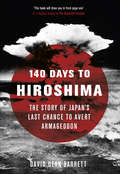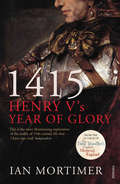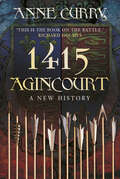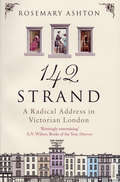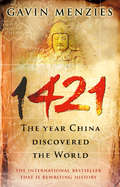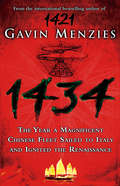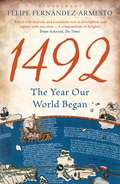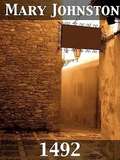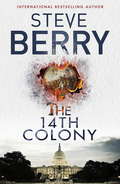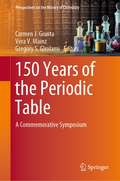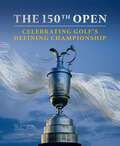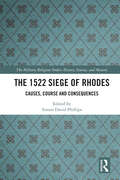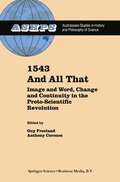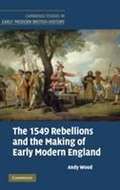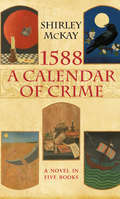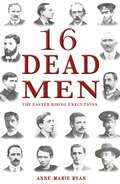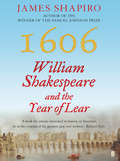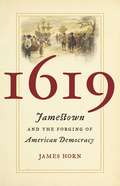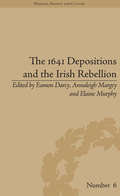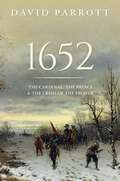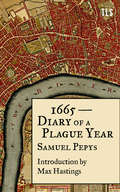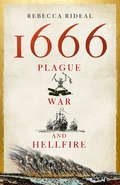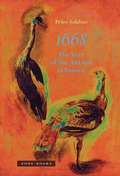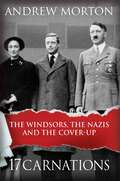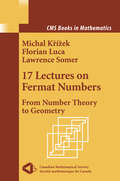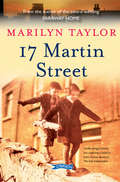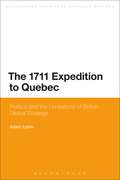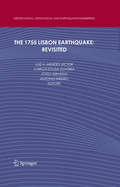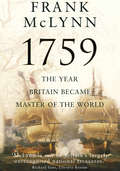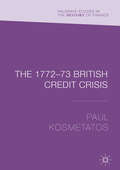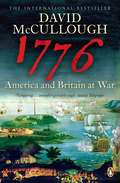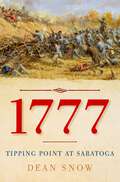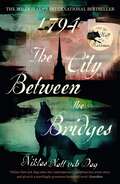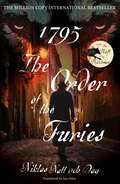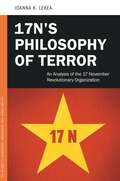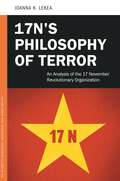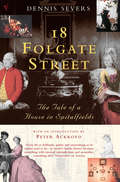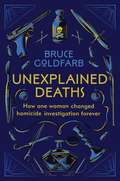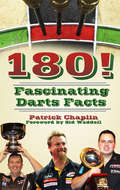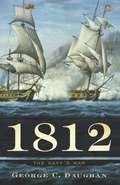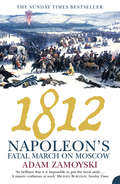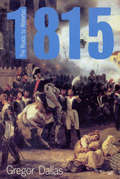- Table View
- List View
140 Days to Hiroshima: The Story of Japan’s Last Chance to Avert Armageddon
by David Dean BarrettDuring the closing months of the Second World War, as America’s strategic bombing campaign incinerated Japan’s cities, two military giants were locked in a death embrace of cultural differences and diplomatic intransigence. The leaders of the United States called for the ‘unconditional surrender’ of the Japanese Empire while developing history’s deadliest weapon and weighing an invasion that would have dwarfed D-Day. Their enemy responded with a last-ditch call for the suicidal resistance of every able-bodied man and woman in ‘The Decisive Battle’ for the homeland. But had Emperor Hirohito’s generals miscalculated how far the Americans had come in developing the atomic bomb? How close did President Harry Truman come to ordering the invasion of Japan? Acclaimed historian David Dean Barrett recounts the secret strategy sessions, fierce debates, looming assassinations and planned invasions that resulted in history’s first use of nuclear weapons in combat, and the ensuing chaos as the Japanese government struggled to respond to the reality of nuclear war.
1415: Henry V's Year Of Glory
by Ian MortimerHenry V is regarded as the great English hero. Lionised in his own day for his victory at Agincourt, his piety and his rigorous application of justice, he was elevated by Shakespeare into a champion of English nationalism for all future generations. But what was he really like? Does he deserve to be thought of as 'the greatest man who ever ruled England?'In Ian Mortimer's groundbreaking book, he portrays Henry in the pivotal year of his reign. Recording the dramatic events of 1415, he offers the fullest, most precise and least romanticised view we have of Henry and what he did. The result is not only a fascinating reappraisal of Henry; it brings to the fore many unpalatable truths which biographers and military historians have largely ignored. At the centre of the book is the campaign which culminated in the battle of Agincourt: a slaughter ground designed not to advance England's interests directly but to demonstrate God's approval of Henry's royal authority on both sides of the Channel.
1415 Agincourt: A New History
by Anne CurryFor many commentators then and now, it was the English archers who won the day for Henry V. This lavishly illustrated history re-tells the story of the battle and Henry V's Normandy campaign from the perspective of the commander of the English archers, Sir Thomas Erpingham. Sir Thomas, an experienced warrior with military experience dating back 40 years is known for his brief but pivotal appearances in Shakespeare's Henry V, where he is correctly portrayed as an elderly, white haired veteran. At 57 he was one of the oldest there and a close personal confident of the King. But what was his background? How did he command his archers to such a place in history? And what role did the longbow and battlefield tactics play in the final analysis of victory?
142 Strand: A Radical Address in Victorian London
by Rosemary Ashton142 Strand was the home of the brilliant, unconventional young publisher John Chapman. All the daring and avant-garde writers and thinkers of Victorian London gathered here, among them Carlyle, Dickens, Thackeray; Americans like Emerson and refugees from revolutionary Europe like Mazzini. In 1851 Chapman brought Marian Evans - the future George Eliot - to London where her arrival caused rows in the household, which included Chapman's wife and also his mistress.The Strand was packed with booksellers, magazine publishers, theatres, clubs, and quack doctors. Only a short distance away were Westminster, the Houses of Parliament and the disreputable pornographers of Holywell street. Chapman's circle touched all these worlds, and the vivid story of these unconventional lives and unorthodox views - marvellously told by Rosemary Ashton - takes us to the heart of Victorian culture, uncovering its surprising energy, its doubts and arguments, and, above all, its passionate reforming spirit.
1421: The Year China Discovered The World (P. S. Series)
by Gavin MenziesOn 8 March 1421, the largest fleet the world had ever seen set sail from China. The ships, some nearly five hundred feet long, were under the command of Emperor Zhu Di's loyal eunuch admirals. Their mission was 'to proceed all the way to the end of the earth to collect tribute from the barbarians beyond the seas' and unite the world in Confucian harmony. Their journey would last for over two years and take them around the globe but by the time they returned home, China was beginning its long, self-imposed isolation from the world it had so recently embraced. And so the great ships were left to rot and the records of their journey were destroyed. And with them, the knowledge that the Chinese had circumnavigated the globe a century before Magellan, reached America seventy years before Columbus, and Australia three hundred and fifty years before Cook...The result of fifteen years research, 1421 is Gavin Menzies' enthralling account of the voyage of the Chinese fleet, the remarkable discoveries he made and the persuasive evidence to support them: ancient maps, precise navigational knowledge, astronomy and the surviving accounts of Chinese explorers and the later European navigators as well as the traces the fleet left behind - from sunken junks to the votive offerings left by the Chinese sailors wherever they landed, giving thanks to Shao Lin, goddess of the sea.Already hailed as a classic, this is the story of an extraordinary journey of discovery that not only radically alters our understanding of world exploration but also rewrites history itself.
1434: The Year A Chinese Fleet Sailed To Italy And Ignited The Renaissance
by Gavin MenziesIn his bestselling book 1421:The Year China Discovered the World, Gavin Menzies revealed that it was the Chinese that discovered America, not Columbus. Now he presents further astonishing evidence that it was also Chinese advances in science, art, and technology that formed the basis of the European Renaissance and our modern world.
1492: The Year Our World Began
by Felipe Fernandez-ArmestoThe world would end in 1492 - so the prophets, soothsayers and stargazers said. They were right. Their world did end. But ours began. In search of the origins of the modern world, 1492 takes readers on a journey around the globe of the time, in the company of real-life travellers, drawing together the threads that began to bind the planet: from the way power and wealth are distributed around the globe to the way major religions and civilizations divide the world. Events that began in 1492 even transformed the whole ecological system of the planet. Wars and witchcraft, plagues and persecutions, poetry and prophecy, science and magic, art and faith - all the glories and follies of the time are in this book.
1492
by Mary JohnstonIn the 15th century, a fabulous journey awaited those who could unlock the secrets of the Earth's geography. Beautifully written and emotionally compelling, 1492: Admiral of the Ocean-Sea tells of the famous adventures of Columbus and his men, who sailed into the almost mythical seas beyond the horizon in search of the "New World," in the hopes of attaining vast wealth and power. <P> <P> This brilliant book, by best-selling author Mary Johnston, traces the long route taken by explorers hoping to locate Asia. Based on their limited means and understanding of navigation, they struggle to find their position, while at the same time encountering many natural wonders and exotic peoples. Tensions build as they appear to become increasingly lost. Columbus and his crew begin to lose hope, until they finally receive the vindication of their bold vision. 1492: Admiral of the Ocean-Sea pays special attention to the conditions of the late 15th century period. It describes the competition between classes and ethnic groups in Spain, as well as the clashes that occurred when people from two very different cultures, native American and European, interact. These issues are not merely abstract, since we see them vividly through the eyes of a disenfranchised individual: a Christian sailor of Jewish background, who has been compelled to lead a secretive and solitary existence. The incidents of his life are brought to us in a handsome, elegant language, uncommon in the books of our day.
The 14th Colony: Book 11 (Cotton Malone #11)
by Steve BerryThe electrifying new Cotton Malone thriller by international bestseller Steve Berry.People say the Cold War is coming back.For some, it never went away.Shot down over Siberia in what was to be a simple meet-and-greet mission, ex-Justice Department agent Cotton Malone is forced into a fight for survival against Aleksandr Zorin, whose loyalty to the former Soviet Union has festered for decades into an intense hatred of the United States.Before escaping, Malone learns that Zorin is headed for North America to join another long-term sleeper embedded in the West. Armed with a Soviet weapon long thought to be just a myth, Zorin is aided by a shocking secret hidden in the archives of America's oldest fraternal organization, the Society of Cincinnati. Past presidents used this group's military offensive - including advice on the invasion of what was to be America's 14th Colony - Canada.Inauguration Day for a new President of the U.S.A. is only hours away. Zorin's deadly plan is timed to bring about political chaos.In a race against the clock from Russia to the White House itself, Malone must not only battle Zorin, he must also confront his deepest fear, a crippling weakness that he's long denied but one that now jeopardizes everything. Steve Berry's trademark mix of fact, fiction, history and speculation is all here in this fast-paced and utterly compelling new thriller.
150 Jahre Gesetzgebung in Deutschland: Entwicklungen des Gesetzgebungsverfahrens von der konstitutionellen Monarchie 1871 bis zur parlamentarischen Demokratie 2021
by Martin H. MöllersDieses Buch erläutert die verfassungsmäßige Ausgestaltung der Gesetzgebungsverfahren im Kaiserreich, in der Weimarer Republik und in der Bundesrepublik Deutschland im Zusammenhang. Dadurch wird nachvollziehbar, dass die Gesetzgebung der heutigen parlamentarischen Demokratie ihre Basis bereits in der konstitutionellen Monarchie des Deutschen Kaiserreichs vor 150 Jahren hat. Obwohl das Verfahren der Gesetzgebung im Kaiserreich vordemokratisch ausgestaltet war, sind ihre wesentlichen Merkmale bis heute unverändert. Welche Änderungen die Gesetzgebungsverfahren von Verfassung zu Verfassung im Einzelnen erfuhren, analysiert das Buch und stellt heraus, dass diese Änderungen vor allem das Bund-Länder-Verhältnis, die Volkssouveränität sowie den Einfluss der Grundrechte auf die Gesetzgebung betrafen. Dabei kommen auch Auffassungen der Staatsrechtslehre früherer Zeiten zur Rechtsstaatlichkeit zur Sprache, die immer noch zum derzeitigen Meinungsspektrum zählen, heute jedoch nicht mehr zu halten sind. Zudem dokumentiert das Buch, wer an den Gesetzgebungsverfahren offiziell und wer faktisch beteiligt war bzw. noch ist und welche politischen Einflussnahmen auf die Gesetzgebung im Lauf der Geschichte festzustellen sind. So wird u.a. dokumentiert, dass insbesondere der Mangel an Transparenz der Zusammenarbeit von Exekutive und Legislative mit Lobbyisten dazu führt, dass viele Gesetze einzelne Bevölkerungsgruppen oder Wirtschaftszweige bevorzugen.
150 Years of the Periodic Table: A Commemorative Symposium (Perspectives on the History of Chemistry)
by Carmen J. Giunta Vera V. Mainz Gregory S. GirolamiThis book provides an overview of the origins and evolution of the periodic system from its prehistory to the latest synthetic elements and possible future additions. The periodic system of the elements first emerged as a comprehensive classificatory and predictive tool for chemistry during the 1860s. Its subsequent embodiment in various versions has made it one of the most recognizable icons of science. Based primarily on a symposium titled “150 Years of the Periodic Table” and held at the August 2019 national meeting of the American Chemical Society, this book describes the origins of the periodic law, developments that led to its acceptance, chemical families that the system struggled to accommodate, extension of the periodic system to include synthetic elements, and various cultural aspects of the system that were celebrated during the International Year of the Periodic Table.
The 150th Open: Celebrating Golf's Defining Championship
by Iain Carter The R&ACelebrating 150 years of The Open.
The 1522 Siege of Rhodes: Causes, Course and Consequences
by Simon David PhillipsIn 1522 the Ottomans attacked the island of Rhodes and, after a six-month siege, the Hospitallers surrendered on terms. The Knights Hospitaller had ruled Rhodes since 1309 and the Ottomans had attempted to capture the island forty years before in 1480, but were defeated by the Knights. The Ottoman victory in 1522 resulted in the Knights being expelled from the island and eventually settling in Malta, Gozo, and Tripoli, and the Ottomans obtaining domination over the Eastern Mediterranean and its trade. This collection of essays, published on the 500th anniversary of the siege, explores such question as why Suleiman the Magnificent attacked Rhodes, what made the 1522 siege successful, and how the Rhodian population, the Knights Hospitaller, the Eastern and Western Mediterranean and Europe in general were affected by the loss of Rhodes. The answers to these questions are explored in new research by expert historians and archaeologists in their field. This book will appeal to all those interested in the Knights Hospitaller, Ottoman History, Crusader Studies, and Early Modern European History.
The 1522 Siege of Rhodes: Causes, Course and Consequences
by Simon David PhillipsIn 1522 the Ottomans attacked the island of Rhodes and, after a six-month siege, the Hospitallers surrendered on terms. The Knights Hospitaller had ruled Rhodes since 1309 and the Ottomans had attempted to capture the island forty years before in 1480, but were defeated by the Knights. The Ottoman victory in 1522 resulted in the Knights being expelled from the island and eventually settling in Malta, Gozo, and Tripoli, and the Ottomans obtaining domination over the Eastern Mediterranean and its trade. This collection of essays, published on the 500th anniversary of the siege, explores such question as why Suleiman the Magnificent attacked Rhodes, what made the 1522 siege successful, and how the Rhodian population, the Knights Hospitaller, the Eastern and Western Mediterranean and Europe in general were affected by the loss of Rhodes. The answers to these questions are explored in new research by expert historians and archaeologists in their field. This book will appeal to all those interested in the Knights Hospitaller, Ottoman History, Crusader Studies, and Early Modern European History.
1543 and All That: Image and Word, Change and Continuity in the Proto-Scientific Revolution (Studies in History and Philosophy of Science #13)
by G. Freeland Anthony CoronesAustralia and New Zealand boast an active community of scholars working in the field of history, philosophy and social studies of science. Australasian Studies in History and Philosophy of Seien ce aims to provide a distinctive publication of essays on a connected outlet for their work. Each volume comprises a group theme, edited by an Australian or a New Zealander with special expertise in that particular area. In each volume, a majority of the contributors is from Australia or New Zealand. Contributions from elsewhere are by no means ruled out, however, and are indeed actively encouraged wherever appropriate to the balance of the volume in question. Earlier volumes in the series have been welcomed for significantly advancing the discussion of the topics they have dealt with. I believe that the present volume will be greeted equally enthusiastically by readers in many parts of the world. R. W Horne General Editor Australasian Studies in History and Philosophy of Science ix LIST OF ILLUSTRATIONS Frontispiece. Andreas Vesalius, Sixth Plate ofthe Muscles, woodcut, designed by Jan Steven van Kalkar, from De humani corporis fabrica (Basel, 1543). (Photo. Scientific Illustration; repr. by kind permission of the University of New South Wales Library. ) In: GUY FREELAND, 'Introduction: In Praise of Toothing-Stones' Fig. 1. Michael Esson, Vesalian Interpretation 3 (1992). (Repr. by kind permission ofthe Artist. ) Fig. 2. Reliefs, University of Padua.
The 1549 Rebellions and the Making of Early Modern England (Cambridge Studies In Early Modern British History Ser.)
by Andy WoodThis is a major new study of the 1549 rebellions, the largest and most important risings in Tudor England. Based upon extensive new archival evidence, the book sheds fresh light on the causes, course and long-term consequences of the insurrections. Andy Wood focuses on key themes in the new social history of politics, concerning the end of medieval popular rebellion; the Reformation and popular politics; popular political language; early modern state formation; speech, silence and social relations; and social memory and the historical representation of the rebellions. He examines the long-term significance of the rebellions for the development of English society, arguing that they represent an important moment of discontinuity between the late medieval and the early modern periods. This compelling new history of Tudor politics from the bottom up will be essential reading for late medieval and early modern historians as well as early modern literary critics.
1588: A Novel in Five Books (1588: A Calendar of Crime #6)
by Shirley McKayA novel in five books featuring:A grisly murderA vanishing corpseA secret romanceA ghostly tale for HalloweenAn innocent accused1588. It is a dark and turbulent time. Scotland’s queen has been executed, the Spanish king seeks revenge, and the people of St Andrews cling desperately to the rhythm of the old ways.The ancient burgh is renowned throughout Europe as a seat of Church and learning but it is also a town full of suspicion, conspiracy and murder. Shirley McKay sets her intriguing and sometimes comic tale around the key points in the calendar: the four quarter days of Candlemas, Whitsun, Lammas, Martinmas and the feast day of Yule.When the first victim is discovered on Candlemas Eve, Hew Cullan, scholar and lawyer, is called upon to investigate; the dark side of the sixteenth century comes alive in a rich tapestry infused with the textures of history and folklore, woven by a master crime writer.
16 Dead Men: The Easter Rising Executions
by Anne-Marie RyanSixteen men were executed in the aftermath of the Easter Rising in Ireland, 1916: fifteen were shot and one was hanged. Their deaths changed the course of Irish history. But who were these leaders who set in motion events that would lead to the creation of an independent Ireland? The executed leaders of the Easter Rising were a diverse group. This book contains fascinating accounts of the life stories of these men and recounts the events that brought each of them to rebellion in April 1916.
1606: William Shakespeare and the Year of Lear
by James Shapiro1606: William Shakespeare and the Year of Lear traces Shakespeare's life and times from the autumn of 1605, when he took an old and anonymous Elizabethan play, The Chronicle History of King Leir, and transformed it into his most searing tragedy, King Lear. 1606 proved to be an especially grim year for England, which witnessed the bloody aftermath of the Gunpowder Plot, divisions over the Union of England and Scotland, and an outbreak of plague. But it turned out to be an exceptional one for Shakespeare, unrivalled at identifying the fault-lines of his cultural moment, who before the year was out went on to complete two other great Jacobean tragedies that spoke directly to these fraught times: Macbeth and Antony and Cleopatra.Following the biographical style of 1599, a way of thinking and writing that Shapiro has made his own, 1606: William Shakespeare and the Year of Lear promises to be one of the most significant and accessible works on Shakespeare in the decade to come.
1619: Jamestown And The Forging Of American Democracy
by James HornAn extraordinary year in which American democracy and American slavery emerged hand in hand.
The 1641 Depositions and the Irish Rebellion (Warfare, Society and Culture)
by Eamon Darcy Annaleigh Margey Elaine MurphyThe 1641 Depositions are among the most important documents relating to early modern Irish history. This essay collection is part of a major project run by Trinity College, Dublin, using the depositions to investigate the life and culture of seventeenth-century Ireland.
The 1641 Depositions and the Irish Rebellion (Warfare, Society and Culture #6)
by Eamon Darcy Annaleigh Margey Elaine MurphyThe 1641 Depositions are among the most important documents relating to early modern Irish history. This essay collection is part of a major project run by Trinity College, Dublin, using the depositions to investigate the life and culture of seventeenth-century Ireland.
1652: The Cardinal, the Prince, and the Crisis of the 'Fronde'
by David ParrottDavid Parrott's book offers a major re-evaluation of the last year of the Fronde - the political upheaval between 1648 and 1652 - in the making of seventeenth-century France. In late December 1651, Cardinal Mazarin defied the order for his perpetual banishment, and re-entered France at the head of an army. The political and military crisis that followed convulsed the nation, and revived the ebbing fortunes of a revolt led by the cousin of the young Louis XIV, the prince de Condé. The study follows in detail the unfolding political and military events of this year, showing how military success and failure swung between the two sides through the campaign, driving both cardinal and prince into a progressive intensification of the conflict, while simultaneously fuelling a quest for compromise and settlement which nonetheless eluded all the negotiators' efforts. The consequences were devastating for France, as civil war smashed into a fragile ecosystem that was already reeling under the impact of the global cooling of the 'Little Ice Age'. 1652 raises questions about established interpretations of French state-building, the rule of cardinal Mazarin and his predecessor, Richelieu, and their contribution to creating the 'absolutism' of Louis XIV.
1652: The Cardinal, the Prince, and the Crisis of the 'Fronde'
by David ParrottDavid Parrott's book offers a major re-evaluation of the last year of the Fronde - the political upheaval between 1648 and 1652 - in the making of seventeenth-century France. In late December 1651, Cardinal Mazarin defied the order for his perpetual banishment, and re-entered France at the head of an army. The political and military crisis that followed convulsed the nation, and revived the ebbing fortunes of a revolt led by the cousin of the young Louis XIV, the prince de Condé. The study follows in detail the unfolding political and military events of this year, showing how military success and failure swung between the two sides through the campaign, driving both cardinal and prince into a progressive intensification of the conflict, while simultaneously fuelling a quest for compromise and settlement which nonetheless eluded all the negotiators' efforts. The consequences were devastating for France, as civil war smashed into a fragile ecosystem that was already reeling under the impact of the global cooling of the 'Little Ice Age'. 1652 raises questions about established interpretations of French state-building, the rule of cardinal Mazarin and his predecessor, Richelieu, and their contribution to creating the 'absolutism' of Louis XIV.
1665 – Diary of a Plague Year
by Samuel PepysWelcome to London in lockdown – in 1665 This timely release of a year in the life of London’s greatest diarist comes with an introduction by bestselling author, Max Hastings.
1666: Plague, War and Hellfire (Not A Ser.)
by Rebecca Rideal1666 was a watershed year for England. The outbreak of the Great Plague, the eruption of the second Dutch War and the Great Fire of London all struck the country in rapid succession and with devastating repercussions.Shedding light on these dramatic events, historian Rebecca Rideal reveals an unprecedented period of terror and triumph. Based on original archival research and drawing on little-known sources, 1666: Plague, War and Hellfire takes readers on a thrilling journey through a crucial turning point in English history, as seen through the eyes of an extraordinary cast of historical characters. While the central events of this significant year were ones of devastation and defeat, 1666 also offers a glimpse of the incredible scientific and artistic progress being made at that time, from Isaac Newton's discovery of gravity to Robert Hooke's microscopic wonders. It was in this year that John Milton completed Paradise Lost, Frances Stewart posed for the now-iconic image of Britannia, and a young architect named Christopher Wren proposed a plan for a new London - a stone phoenix to rise from the charred ashes of the old city.With flair and style, 1666 shows a city and a country on the cusp of modernity, and a series of events that forever altered the course of history.
1668: The Year of the Animal in France (Zone Bks.)
by Peter SahlinsPeter Sahlins’s brilliant new book reveals the remarkable and understudied “animal moment” in and around 1668 in which authors (including La Fontaine, whose Fables appeared in that year), anatomists, painters, sculptors, and especially the young Louis XIV turned their attention to nonhuman beings.At the center of the Year of the Animal was the Royal Menagerie in the gardens of Versailles, dominated by exotic and graceful birds. In the remarkable unfolding of his original and sophisticated argument, Sahlins shows how the animal bodies of the menagerie and others (such as the dogs and lambs of the first xenotransfusion experiments) were critical to a dramatic rethinking of governance, nature, and the human.The animals of 1668 helped to shift an entire worldview in France — what Sahlins calls Renaissance humanimalism — toward more modern expressions of Classical naturalism and mechanism. In the wake of 1668 came the debasement of animals and the strengthening of human animality, including in Descartes’s animal-machine, highly contested during the Year of the Animal.At the same time, Louis XIV and his intellectual servants used the animals of Versailles to develop and then to transform the symbolic language of French absolutism. Louis XIV came to adopt a model of sovereignty after 1668 where his absolute authority is represented in manifold ways with the bodies of animals and justified by the bestial nature of his human subjects.1668: The Year of the Animal in France explores and reproduces the king’s animal collections — in printed text, weaving, poetry, and engraving, all seen from a unique interdisciplinary perspective. Sahlins brings the animals of 1668 together and to life as he observes them critically in their native habitats — within the animal palace itself by Louis Le Vau, the paintings and tapestries of Charles Le Brun, the garden installations of André Le Nôtre, the literary work of Charles Perrault and the natural history of his brother Claude, the poetry of Madeleine de Scudéry, the philosophy of René Descartes, the engravings of Sébastien Leclerc, the trans_fusion experiments of Jean Denis, and others.The author joins the non_human and human agents of 1668 — panthers and painters, swans and scientists, weasels and weavers — in a learned and sophisticated treatment that will engage scholars and students of early modern France and Europe and readers broadly interested in the subject of animals in human history.
17 Carnations: The Windsors, The Nazis and The Cover-Up
by Andrew MortonThe true story of Edward Windsor and Wallis Simpson’s involvement with the Nazi regime, and the post-war cover-up.The story of the love affair between Wallis Simpson and King Edward VIII, and his abdication, has provoked endless fascination. However, the full story of their links with the German aristocracy and Hitler has remained untold.* 17 Carnations chronicles Hitler’s attempts to matchmake between Edward and a German noblewoman, and Wallis’s affair with the German foreign minister, who sent her a carnation for every night they had spent together. *Pro-German sympathizers, the couple became embroiled in a conspiracy to install Edward as a puppet king after the Allies’ defeat.* The Duke’s letters were hidden for years as the British establishment attempted to cover up the connection between the House of Windsor and Hitler.Thoroughly researched, 17 Carnations reveals the whole fascinating story, throwing sharp new light on this dark chapter of history.
17 Lectures on Fermat Numbers: From Number Theory to Geometry (CMS Books in Mathematics)
by Michal Krizek Florian Luca Lawrence SomerThe pioneering work of Pierre de Fermat has attracted the attention of mathematicians for over 350 years. This book provides an overview of the many properties of Fermat numbers and demonstrates their applications in areas such as number theory, probability theory, geometry, and signal processing. It is an ideal introduction to the basic mathematical ideas and algebraic methods connected with the Fermat numbers.
17 Martin Street
by Marilyn TaylorA web of secrets can risk lives … When Hetty’s family move to Martin Street near Portobello bridge in Dublin, they’re not sure of their welcome. And next door, Ben’s family are not sure about their new Jewish neighbours: it’s The Emergency and they are suspicious of strangers. But for Ben, the chance to earn a few pence is too great and secretly he does odd jobs for them. And there’s a bigger secret: Renata, a World War Two refugee, is on the run in the city. Hetty is determined to rescue her. The web of secrets begins to unravel and there are lives at risk. Can Hetty and Ben overcome their differences and save Renata, or are they just meddling in things they know too little about?
The 1711 Expedition to Quebec: Politics and the Limitations of British Global Strategy (Bloomsbury Studies in Military History)
by Adam LyonsIn 1711, the newly formed Great Britain launched its first attempt to conquer French North America. The largest military force ever assembled to fight on the continent was dispatched and combined with colonial American units in Boston before proceeding up the St Lawrence River for Quebec. An additional colonial force set out from Albany to march on Montreal - but neither Briton nor colonist reached their respective targets.Adam Lyons looks at the expedition as a product of the turbulent political environment at the end of Queen Anne's reign and as a symbol of a shift in politics and strategy. Its failure proved to be detrimental to the reputation of the expedition's naval commander, Rear-Admiral Sir Hovenden Walker, but Lyons shows how true blame should lie with his political master, Secretary of State Henry St John, who ensured the expedition's failure by maintaining absolute control and secrecy. The 1711 Expedition to Quebec demonstrates how the expedition helped to alter British policy by renewing an interest in 'blue water', or maritime, operations that would gain dominance for Britain in commerce and at sea. This strategy would later see huge success, ultimately resulting in the fall of Quebec to Wolfe and the eventual conquest of French North America in the Seven Years War.
The 1711 Expedition to Quebec: Politics and the Limitations of British Global Strategy (Bloomsbury Studies in Military History)
by Adam LyonsIn 1711, the newly formed Great Britain launched its first attempt to conquer French North America. The largest military force ever assembled to fight on the continent was dispatched and combined with colonial American units in Boston before proceeding up the St Lawrence River for Quebec. An additional colonial force set out from Albany to march on Montreal - but neither Briton nor colonist reached their respective targets.Adam Lyons looks at the expedition as a product of the turbulent political environment at the end of Queen Anne's reign and as a symbol of a shift in politics and strategy. Its failure proved to be detrimental to the reputation of the expedition's naval commander, Rear-Admiral Sir Hovenden Walker, but Lyons shows how true blame should lie with his political master, Secretary of State Henry St John, who ensured the expedition's failure by maintaining absolute control and secrecy. The 1711 Expedition to Quebec demonstrates how the expedition helped to alter British policy by renewing an interest in 'blue water', or maritime, operations that would gain dominance for Britain in commerce and at sea. This strategy would later see huge success, ultimately resulting in the fall of Quebec to Wolfe and the eventual conquest of French North America in the Seven Years War.
The 1755 Lisbon Earthquake: Revisited (Geotechnical, Geological and Earthquake Engineering #7)
by João Azevedo A. Ribeiro Luiz Mendes-Victor Carlos Sousa OliveiraThe 1755 earthquake and tsunami were influential not only in Portugal but in all European and North African countries where the devastating effects were felt. The entire world was deeply impressed and the discussion of its causes generated a large amount of scientific and metaphysical speculation. It inspired philosophers, poets and writers. The socio-economic consequences of the event were great and affected the future organization and development of Portugal. The possibility of a similar occurence urges society and the scientific community to reflect on its lessons. AudienceThis work is of interest to experts in seismology, earthquake engineering, civil protection, urban planning and it is a reference book for doctoral students.
1759: The Year Britain Became Master of the World
by Frank McLynnAlthough 1759 is not a date as well known in British history as 1215, 1588, or 1688, there is a strong case to be made that it is the most significant year since 1066. In 1759 - the fourth year of the Seven Years War - the British defeated the French in arduous campaigns on four continents and also achieved absolute mastery of the seas.Drawing on a mass of primary materials - from texts in the Vatican archives to oral histories of the North American Indians - Frank McLynn shows how the conflict between Brtiain and France triggered the first 'world war', raging from Europe to Africa; the Caribbean to the Pacific; the plains of the Ganges to the Great Lakes of North America. It also brought about the War of Independence, the acquisition by Britain of the Falkland Islands and, ultimately, the French Revolution.
The 1772–73 British Credit Crisis (Palgrave Studies in the History of Finance)
by Paul KosmetatosNowadays remembered mostly through Adam Smith’s references to the short-lived Ayr Bank in the Wealth of Nations, the 1772-3 financial crisis was an important historical episode in its own right, taking place during a pivotal period in the development of financial capitalism and coinciding with the start of the traditional industrialisation narrative. It was also one of the earliest purely financial crises occurring in peacetime, and its progress showed an impressive geographical reach, involving England, Scotland, the Netherlands and the North American colonies. This book uses a variety of previously unpublished archival sources to question the bubble narrative usually associated with this crisis, and to identify the mechanisms of financial contagion that allowed the failure of a small private bank in London to cause rapid and severe distress throughout the 18th century financial system. It re-examines the short and turbulent career of the Ayr Bank, and concludes that its failure was the result of cavalier liability management akin to that of Northern Rock in 2007, rather than the poor asset quality alleged in existing literature. It furthermore argues that the Bank of England’s prompt efforts to contain the crisis are evidence of a Lender of Last Resort in action, some thirty years before the classical formulation of the concept by Henry Thornton.
The 1772–73 British Credit Crisis (Palgrave Studies in the History of Finance)
by Paul KosmetatosNowadays remembered mostly through Adam Smith’s references to the short-lived Ayr Bank in the Wealth of Nations, the 1772-3 financial crisis was an important historical episode in its own right, taking place during a pivotal period in the development of financial capitalism and coinciding with the start of the traditional industrialisation narrative. It was also one of the earliest purely financial crises occurring in peacetime, and its progress showed an impressive geographical reach, involving England, Scotland, the Netherlands and the North American colonies. This book uses a variety of previously unpublished archival sources to question the bubble narrative usually associated with this crisis, and to identify the mechanisms of financial contagion that allowed the failure of a small private bank in London to cause rapid and severe distress throughout the 18th century financial system. It re-examines the short and turbulent career of the Ayr Bank, and concludes that its failure was the result of cavalier liability management akin to that of Northern Rock in 2007, rather than the poor asset quality alleged in existing literature. It furthermore argues that the Bank of England’s prompt efforts to contain the crisis are evidence of a Lender of Last Resort in action, some thirty years before the classical formulation of the concept by Henry Thornton.
1776: America and Britain at War
by David McCulloughAmerica's most acclaimed historian presents the intricate story of the year of the birth of the United States of America. 1776 tells two gripping stories: how a group of squabbling, disparate colonies became the United States, and how the British Empire tried to stop them. A story with a cast of amazing characters from George III to George Washington, to soldiers and their families, this exhilarating book is one of the great pieces of historical narrative.
1777: Tipping Point at Saratoga
by Dean SnowIn the autumn of 1777, near Saratoga, New York, an inexperienced and improvised American army led by General Horatio Gates faced off against the highly trained British and German forces led by General John Burgoyne. The British strategy in confronting the Americans in upstate New York was to separate rebellious New England from the other colonies. Despite inferior organization and training, the Americans exploited access to fresh reinforcements of men and materiel, and ultimately handed the British a stunning defeat. The American victory, for the first time in the war, confirmed that independence from Great Britain was all but inevitable. Assimilating the archaeological remains from the battlefield along with the many letters, journals, and memoirs of the men and women in both camps, Dean Snow's 1777 provides a richly detailed narrative of the two battles fought at Saratoga over the course of thirty-three tense and bloody days. While the contrasting personalities of Gates and Burgoyne are well known, they are but two of the many actors who make up the larger drama of Saratoga. Snow highlights famous and obscure participants alike, from the brave but now notorious turncoat Benedict Arnold to Frederika von Riedesel, the wife of a British major general who later wrote an important eyewitness account of the battles. Snow, an archaeologist who excavated on the Saratoga battlefield, combines a vivid sense of time and place with details on weather, terrain, and technology and a keen understanding of the adversaries' motivations, challenges, and heroism into a suspenseful, novel-like account. A must-read for anyone with an interest in American history, 1777 is an intimate retelling of the campaign that tipped the balance in the American War of Independence.
1777: Tipping Point at Saratoga
by Dean SnowIn the autumn of 1777, near Saratoga, New York, an inexperienced and improvised American army led by General Horatio Gates faced off against the highly trained British and German forces led by General John Burgoyne. The British strategy in confronting the Americans in upstate New York was to separate rebellious New England from the other colonies. Despite inferior organization and training, the Americans exploited access to fresh reinforcements of men and materiel, and ultimately handed the British a stunning defeat. The American victory, for the first time in the war, confirmed that independence from Great Britain was all but inevitable. Assimilating the archaeological remains from the battlefield along with the many letters, journals, and memoirs of the men and women in both camps, Dean Snow's 1777 provides a richly detailed narrative of the two battles fought at Saratoga over the course of thirty-three tense and bloody days. While the contrasting personalities of Gates and Burgoyne are well known, they are but two of the many actors who make up the larger drama of Saratoga. Snow highlights famous and obscure participants alike, from the brave but now notorious turncoat Benedict Arnold to Frederika von Riedesel, the wife of a British major general who later wrote an important eyewitness account of the battles. Snow, an archaeologist who excavated on the Saratoga battlefield, combines a vivid sense of time and place with details on weather, terrain, and technology and a keen understanding of the adversaries' motivations, challenges, and heroism into a suspenseful, novel-like account. A must-read for anyone with an interest in American history, 1777 is an intimate retelling of the campaign that tipped the balance in the American War of Independence.
1794: The Million Copy International Bestseller (Jean Mickel Cardell #2)
by Niklas Natt Dag#1 bestseller in Sweden with over 1.5 million copies sold'Niklas Natt och Dag takes the contemporary Scandinavian crime story and gives it a startlingly gruesome historical twist' GuardianThe year is 1794. A young nobleman, Eric Three Roses, languishes in hospital. Some think he would be just at home in the madhouse across the road. Ridden with guilt, he spends his nights writing down memories of his lost love who died on their wedding night. Her mother also mourns her and when no one listens to her suspicions, she begs the aid of the only person who will listen: Jean Mickel Cardell, the one-armed watchman.Cecil Winge is six months in the ground but when his younger brother Emil seeks out the watchman to retrieve his brother's missing pocket watch, Cardell enlists his help to discover what really happened at Three Roses' estate that night. But, unlike his dead brother, the younger Winge is an enigma, and Cardell soon realises that he may be more hindrance than help. And when they discover that a mysterious slave trader has been running Three Roses' affairs, it is a race against time to discover the truth before it's too late.In 1794, the second installment of Niklas Natt och Dag's historical noir trilogy, we are reunited with Mickel Cardell, Anna Stina Knapp, and the bustling world of late eighteenth century Stockholm from The Wolf and the Watchman. The city is about to see its darkest days yet as veneers crack and the splendour of old gives way to what is hiding in the city's nooks and crannies.
1795: The Order of the Furies (Jean Mickel Cardell #3)
by Niklas Natt Dag'Niklas Natt och Dag takes the contemporary Scandinavian crime story and gives it a startlingly gruesome historical twist' GuardianIt is 1795 and evil lurks in the winding alleys of Stockholm. Tycho Ceton prowls the city, willing to do anything to survive and reclaim the honour he has lost. No one knows what he is planning next but Emil Winge, haunted by the ghosts of his past, is determined to stop him. Meanwhile, Jean Mickel Cardell is preoccupied with his own search for Anna Stina Knapp. She may have in her possession a letter which could have devastating consequences in the wrong hands.All the while, hell looms inexorably . . .In 1795: The Order of the Furies, the third instalment of Niklas Natt och Dag's historical noir trilogy, we are plunged once again into the bustling world of late eighteenth-century Stockholm. The city is teetering on a precipice, with evil shaking its core, but can love and friendship prevail?Translated by Ian Giles
17N's Philosophy of Terror: An Analysis of the 17 November Revolutionary Organization (PSI Guides to Terrorists, Insurgents, and Armed Groups)
by Ioanne K. LekeaThis book uses a cross-disciplinary approach to examine the creation, development, ideology, and practice of the Marxist terrorist group 17N.Were the members of 17N individuals with high moral principles, as they claimed, who did their best to protect the civilians who happened to be within their field of operations? Or were they simply violent guerillas who prioritized successful assassinations of their targets at any cost? The textual analysis of this book addresses these questions and studies 17N from inception to the time when its members were arrested, providing a uniquely thorough examination of the organization manifestos and its correlation to the group's ideology and actual practices.17N's Philosophy of Terror: An Analysis of the 17 November Revolutionary Organization first outlines the political and ideological framework of 17? and then describes their terrorist strategy and tactics. The authors consider these operations in the context of the manifestos that followed the terrorist acts, and conclude the work by addressing the events following the apprehension of 17N members—the trial, the verdicts, the appeal trial, and the conclusion of appeal trial.
17N's Philosophy of Terror: An Analysis of the 17 November Revolutionary Organization (PSI Guides to Terrorists, Insurgents, and Armed Groups)
by Ioanne K. LekeaThis book uses a cross-disciplinary approach to examine the creation, development, ideology, and practice of the Marxist terrorist group 17N.Were the members of 17N individuals with high moral principles, as they claimed, who did their best to protect the civilians who happened to be within their field of operations? Or were they simply violent guerillas who prioritized successful assassinations of their targets at any cost? The textual analysis of this book addresses these questions and studies 17N from inception to the time when its members were arrested, providing a uniquely thorough examination of the organization manifestos and its correlation to the group's ideology and actual practices.17N's Philosophy of Terror: An Analysis of the 17 November Revolutionary Organization first outlines the political and ideological framework of 17? and then describes their terrorist strategy and tactics. The authors consider these operations in the context of the manifestos that followed the terrorist acts, and conclude the work by addressing the events following the apprehension of 17N members—the trial, the verdicts, the appeal trial, and the conclusion of appeal trial.
18 Folgate Street: The Life of a House in Spitalfields
by Dennis SeversGrowing up in California, Dennis Severs fell in love with the England he saw in old black and white movies. At seventeen he came to London, looking for a home with a heart. In 1979 he found one, a run-down silk-weaver's house in Spitalfields, and over the next twenty years he transformed it into an enchanted time-capsule, transporting us back to the eighteenth century. From cellar to roof, he filled 18 Folgate Street with original objects and furniture, found in the local markets, lit by candles and chandeliers. More than that, he invented a family to live here, the Jervis family, Huguenot weavers who fled persecution in France in 1688, and bought the house in 1724. Sounds and scents bring their world to life, always just out of sight - floorboards creak, fires crackle, a kettle hisses on the hob. Visitors step through the frame of time, like entering an old master painting. As we move from room to room on a tour you will never forget, we follow the Jervis story from the days of the Georges and the Regency to harsher Victorian times - and even to the attic room of Scrooge himself.
18 Tiny Deaths: The Untold Story of Frances Glessner Lee and the Invention of Modern Forensics
by Bruce GoldfarbFor most of human history, sudden and unexpected deaths of a suspicious nature, when they were investigated at all, were examined by lay persons without any formal training. People often got away with murder. Modern forensic investigation originates with Frances Glessner Lee - a pivotal figure in police science.Frances Glessner Lee (1878-1962), born a socialite to a wealthy and influential Chicago family, was never meant to have a career, let alone one steeped in death and depravity. Yet she became the mother of modern forensics and was instrumental in elevating homicide investigation to a scientific discipline. Frances Glessner Lee learned forensic science under the tutelage of pioneering medical examiner Magrath - he told her about his cases, gave her access to the autopsy room to observe post-mortems and taught her about poisons and patterns of injury. A voracious reader too, Lee acquired and read books on criminology and forensic science - eventually establishing the largest library of legal medicine. Lee went on to create The Nutshell Studies of Unexplained Death - a series of dollhouse-sized crime scene dioramas depicting the facts of actual cases in exquisitely detailed miniature - and perhaps the thing she is most famous for. Celebrated by artists, miniaturists and scientists, the Nutshell Studies are a singularly unusual collection. They were first used as a teaching tool in homicide seminars at Harvard Medical School in the 1930s, and then in 1945 the homicide seminar for police detectives that is the longest-running and still the highest-regarded training of its kind in America. Both of which were established by the pioneering Lee.In 18 Tiny Deaths, Bruce Goldfarb weaves Lee's remarkable story with the advances in forensics made in her lifetime to tell the tale of the birth of modern forensics.
180! Fascinating Darts Facts: Fascinating Darts Facts
by Patrick ChaplinIn 180! Fascinating Darts Facts Patrick Chaplin delves deep into his mind-boggling archive to present a plethora of nuggets of darting trivia never before gathered together in book form. Find out . . . Why are darts matches usually played as -01 games (1,001, 501, 301, etc) and not 1,000, 500 or 300? Were early dartboards really made of pig-bristle? Who was the first darts player to endorse a darts product? Why did a Bolton darts team go ‘topless’ in the 1990s? The answers to these and many other darts questions can be found in this book. From the big guns of yesteryear to the stars of the modern game and from the sport’s history and origins to fans drinking a world darts venue dry, it’s all here in 180! Fascinating Darts Facts.
1812: The Navy's War
by George C. DaughanAt the outbreak of the War of 1812, America's prospects looked dismal. It was clear that the primary battlefield would be the open ocean-but America's war fleet, only twenty ships strong, faced a practiced British navy of more than a thousand men-of-war. Still, through a combination of nautical deftness and sheer bravado, the American navy managed to take the fight to the British and turn the tide of the war: on the Great Lakes, in the Atlantic, and even in the eastern Pacific. In 1812: The Navy's War, prizewinning historian George C. Daughan tells the thrilling story of how a handful of heroic captains and their stalwart crews overcame spectacular odds to lead the country to victory against the world's greatest imperial power. A stunning contribution to military and national history, 1812: The Navy's War is the first complete account in more than a century of how the U.S. Navy rescued the fledgling nation and secured America's future.
1812: The Navy's War
by George C DaughanAt the outbreak of the War of 1812, America's prospects looked dismal. It was clear that the primary battlefield would be the open ocean -- but America's war fleet, only twenty ships strong, faced a practiced British navy of more than a thousand men-of-war. Still, through a combination of nautical deftness and sheer bravado, the American navy managed to take the fight to the British and turn the tide of the war: on the Great Lakes, in the Atlantic, and even in the eastern Pacific. In 1812: The Navy's War, prizewinning historian George C. Daughan tells the thrilling story of how a handful of heroic captains and their stalwart crews overcame spectacular odds to lead the country to victory against the world's greatest imperial power. A stunning contribution to military and national history, 1812: The Navy's War is the first complete account in more than a century of how the U.S. Navy rescued the fledgling nation and secured America's future.
1812: Napoleon's Fatal March On Moscow
by Adam ZamoyskiAdam Zamoyski’s bestselling account of Napoleon’s invasion of Russia and his catastrophic retreat from Moscow, events that had a profound effect on European history.
1815: The Roads to Waterloo
by Gregor DallasThe seventeen months from April 1814 to August 1815 were an extraordinary period in European history; a period which saw two sieges of Paris, a complete revision of Europe's political frontiers, an international Congress set up in Vienna, civil war in Italy and international war in Belgium.Gregor Dallas tells the story of these days through the perspectives of three very different European cities: the great metropolis of London, post-revolutionary Paris and baroque Vienna. The writing is almost cinematic in its power to evoke and bring to life the Europe of Tolstoy: the ebb and flow of power, of armies and of peoples across Europe's northern plains. Working essentially from primary sources, Dallas is as interested in the weather conditions before battle as in the way cartoonists reacted to court intrigues and fashions.It is also Europe seen through the eyes of its central players: Talleyrand, who has served nearly every French regime since the Revolution of 1789; Metternich, who devises new plans for a 'Germany' that does not yet exist and for a 'Europe' that remains devided; Wellington, who reveals himself a diplomat as well as a soldier; Tsar Alexander, an idealist seeking to impose a uniform plan for all Europe; and 'Boney' himself, who has his own ideal of Europe and, though banished to Elba, does not abandon his dream to realise it.
